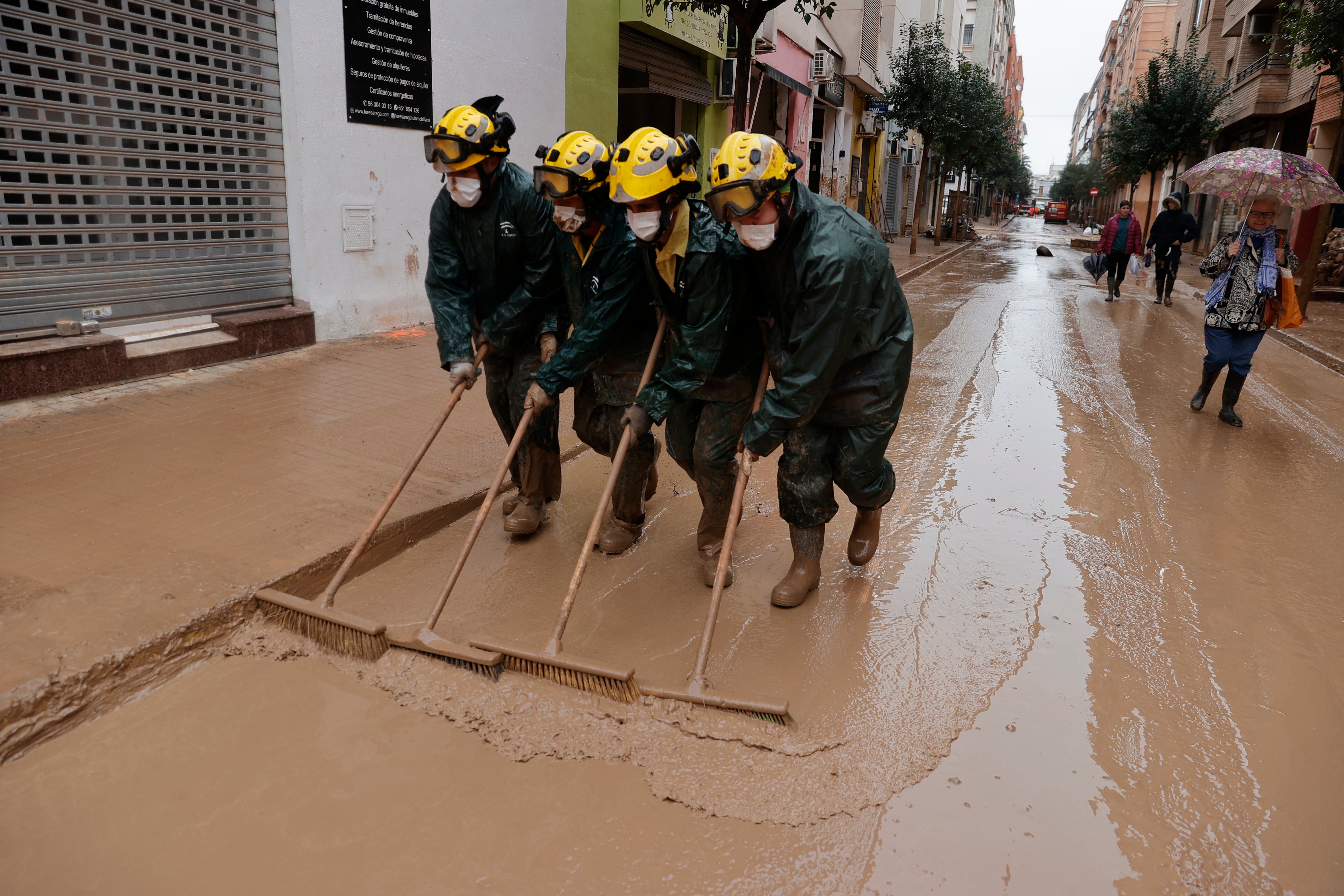Cities are showing what climate leadership looks like
When it comes to meeting the challenge of man-made climate change, mayors are streets ahead of national leaders in cutting emissions and implementing innovative environmental schemes, says Sadiq Khan


Your support helps us to tell the story
From reproductive rights to climate change to Big Tech, The Independent is on the ground when the story is developing. Whether it's investigating the financials of Elon Musk's pro-Trump PAC or producing our latest documentary, 'The A Word', which shines a light on the American women fighting for reproductive rights, we know how important it is to parse out the facts from the messaging.
At such a critical moment in US history, we need reporters on the ground. Your donation allows us to keep sending journalists to speak to both sides of the story.
The Independent is trusted by Americans across the entire political spectrum. And unlike many other quality news outlets, we choose not to lock Americans out of our reporting and analysis with paywalls. We believe quality journalism should be available to everyone, paid for by those who can afford it.
Your support makes all the difference.In August, towns in the US state of Connecticut experienced 1,000-year rain events, resulting in flash flooding that caused power outages, road closures and the death of two women.
In September, torrential downpours caused a sinkhole to open up in southwest London, sparking rescue operations as firefighters scrambled to free people trapped in their cars by rising floodwaters.
In October, a year’s worth of rainfall in one day deluged eastern Spain, unleashing catastrophic flooding that claimed the lives of more than 200 people; while in South Sudan, almost three-quarters of a million people continue to suffer hunger and hardship following devastating floods.
It is against this grim backdrop of climate-induced carnage that world leaders have been gathering in Azerbaijan for Cop29. Yet, despite the mounting human toll, the overriding message of the conference seems to be one of ambivalence, not urgency.
The likelihood of the new US administration withdrawing from the Paris climate agreement for the second time has only served to further cast a long shadow over proceedings.
Thankfully, there are rays of hope. The UK government is reassuming its role as a climate leader, announcing a new ambitious target to reduce our country’s emissions by 81 per cent by 2035. Many businesses are fully locked into the green transition and have no plans of reneging on their commitments.
And climate experts doubt that other nations will join the US in exiting the Paris deal even if concerns persist about whether they’re taking the steps necessary to meet their obligations.
For too long, barring a handful of exceptions, national governments have been climate delayers – willing to kick the can down the road as wildfires rage, sea levels rise and extreme weather intensifies.
But the good news is that in comparison, cities have proven to be the climate doers – stepping up and addressing the challenge head on, rather than sidestepping or ducking it. Indeed, while nations dither and are divided, cities can and do deliver, with an impressive unity of purpose that offers not only a sharp contrast – but genuine grounds for optimism. I agree with the UN secretary general when he described mayors as “the world’s first responders to the climate emergency”.
Through C40 Cities – a global coalition of almost 100 cities, of which I serve as co-chair – we’re demonstrating the gap in both ambition and achievement between cities and nations.
C40 cities have pledged to cut fossil fuel consumption by half by 2030, demonstrating the difference our cities can make. Cities across the globe are leading the charge when it comes to climate action. Over 80 per cent of C40 cities now outperform their respective nation states in emissions reduction.
“Freetown the Treetown” – a flagship initiative to restore and improve ecological infrastructure in Sierra Leone’s capital – has already planted more than half a million trees in climate-vulnerable areas, creating more than 1,200 jobs, 80 per cent of which have gone to young people. Seoul is providing free energy upgrades to low-income households. Bogotá is training women as e-bus drivers; Salvador as solar energy experts. In every way possible, cities are showing what climate leadership looks like.
In London, we’ve implemented some of the most innovative climate and environmental policies of any city across the globe. We’ve introduced and twice expanded our ultra-low emission Zzne (Ulez), creating the world’s largest clean air zone. We’ve won national park city status, planted more than half a million trees, started a rewilding revolution, invested millions in green jobs and led the way in turning our capital into a global centre for green finance.
And by always standing up for climate science and bringing forward our net zero target to 2030, we’ve made London a beacon for climate action the world over, with more zero-emission buses now on our roads than any other city in Western Europe.
Across the globe, cities have demonstrated that they can do much of the heavy lifting involved in moving to a low-carbon world. But we need more support from national governments who too often have dragged their feet.
Unlike many presidents and prime ministers, we recognise the gravity of this moment and the political will to act exists among mayors and city leaders. We could go even further, even faster if central governments devolved more powers and funding to us. At the U20 and G20 Summit, representatives from the UK pressed the case for empowering world cities as a means to realising multi-national climate agreements.
The UK recently joined the coalition for high-ambition multilevel partnerships (Champ). It means our national government is now committed to working much more closely with London and other cities on climate action. This comes at a critical moment. After the Paris climate accords were adopted, each signatory set its own nationally determined contribution – its national plan for cutting greenhouse gas emissions. These plans were updated five years later, and the next round is due in 2025. For the first time, the UK’s plan, along with those of many other countries, will include the input and output of its cities.
This is a significant development and one we should draw real encouragement from – not only because it underscores the UK government’s renewed commitment to tackling the climate crisis, but because it charts a new path forward for achieving our net zero goals. The future of our civilisation depends on the collective efforts of countries and cities. Ensuring we can play our full part in this generational battle might just tip the balance in favour of our people and planet.
Sadiq Khan is mayor of London and co-chair of C40 Cities
Join our commenting forum
Join thought-provoking conversations, follow other Independent readers and see their replies
Comments